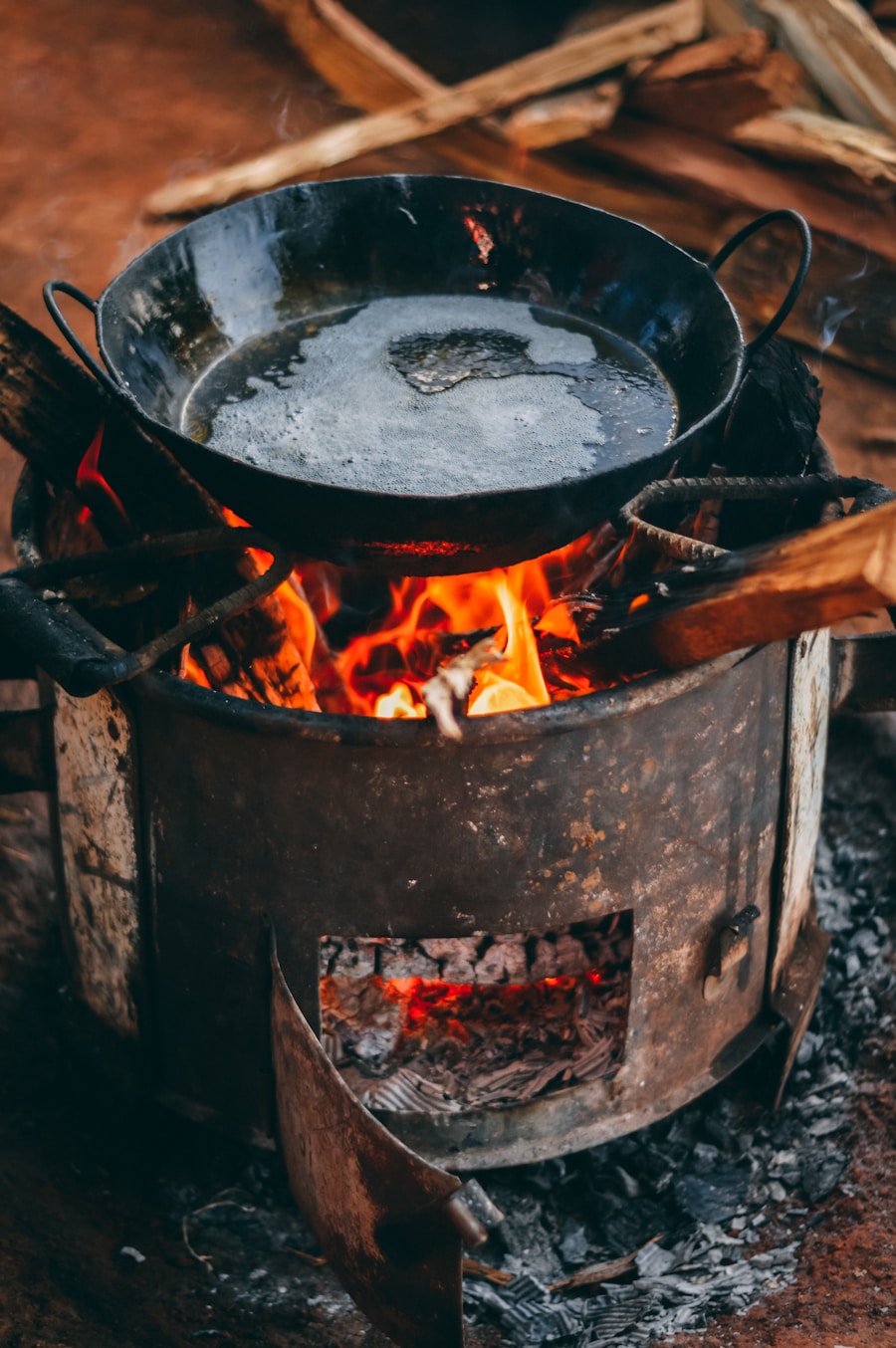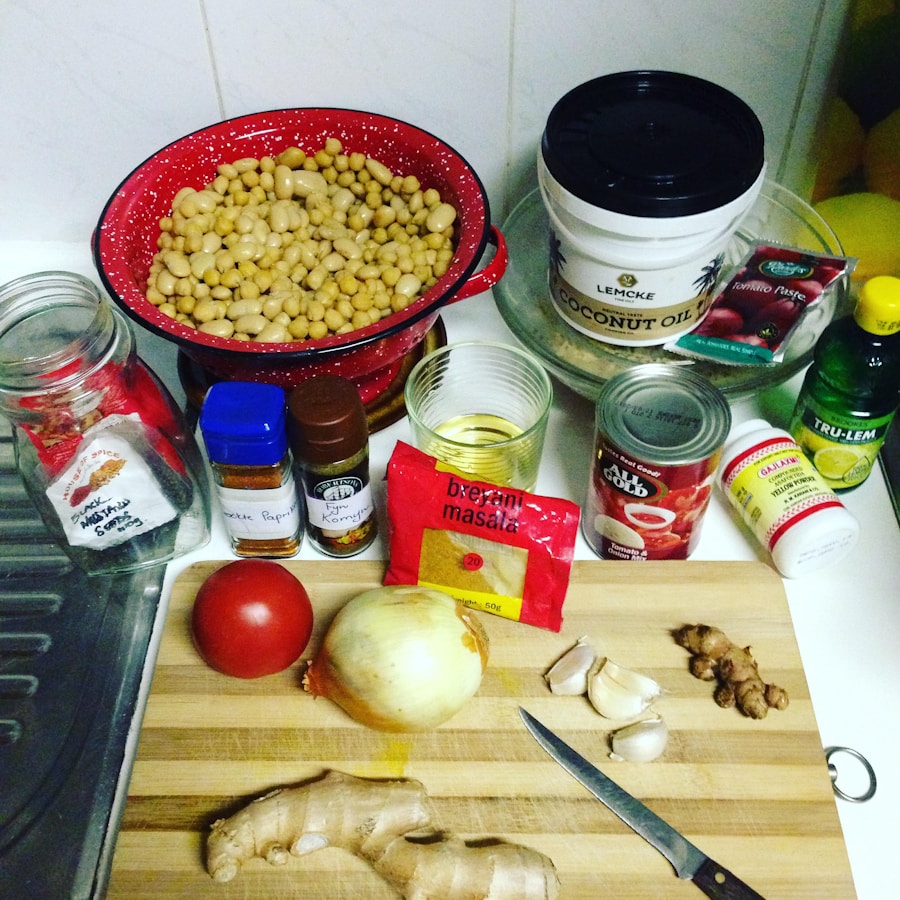Knife skills are the cornerstone of culinary expertise, serving as the foundation upon which all cooking techniques are built. Mastering the art of using a knife not only enhances efficiency in the kitchen but also elevates the presentation and flavor of dishes. The first step in developing these skills is understanding the various types of knives and their specific uses.
A chef’s knife, for instance, is versatile and ideal for chopping, slicing, and dicing a wide range of ingredients. The paring knife, on the other hand, is perfect for intricate tasks such as peeling fruits or deveining shrimp. Each knife has its own purpose, and knowing when to use each one is crucial for any aspiring chef.
Once the types of knives are understood, the next focus should be on proper handling and cutting techniques. The grip is essential; a pinch grip, where the thumb and index finger hold the blade while the other fingers wrap around the handle, provides better control and stability. Equally important is the cutting technique itself.
The rocking motion used when chopping herbs or vegetables allows for a more efficient cut, while a straight downward motion is ideal for slicing through meats. Practicing these techniques on various ingredients can significantly improve speed and precision. Additionally, maintaining a sharp blade is vital; a dull knife not only makes cutting more difficult but also increases the risk of accidents in the kitchen.
Key Takeaways
- Proper knife skills are essential for efficient and safe cooking
- Sautéing requires high heat and quick cooking to achieve a perfect sear
- Roasting involves cooking food in the oven at high temperatures to achieve a crispy exterior
- Braising and stewing involve slow cooking in liquid to tenderize tough cuts of meat
- Grilling and barbecuing require proper heat management and attention to achieve the desired level of doneness
Perfecting the Art of Sautéing
Sautéing is a fundamental cooking technique that involves cooking food quickly in a small amount of fat over relatively high heat. This method is particularly effective for vegetables, meats, and seafood, allowing for the development of rich flavors and textures. The key to successful sautéing lies in the choice of fat; oils with high smoke points, such as canola or grapeseed oil, are often preferred to prevent burning.
Butter can also be used for its flavor but should be combined with oil to raise its smoke point. The right pan is equally important; a heavy-bottomed skillet or sauté pan ensures even heat distribution, which is crucial for achieving that perfect sear. Timing and temperature control are critical components of sautéing.
Ingredients should be added to the pan in stages based on their cooking times; for example, denser vegetables like carrots should be added before more delicate ones like bell peppers. This staggered approach ensures that everything cooks evenly without becoming mushy. Additionally, it’s essential to avoid overcrowding the pan, as this can lead to steaming rather than sautéing.
A well-executed sauté results in beautifully caramelized surfaces and vibrant colors, enhancing both the visual appeal and flavor profile of the dish.
Mastering the Fundamentals of Roasting

Roasting is a dry heat cooking method that involves cooking food evenly in an oven, resulting in a beautifully browned exterior and tender interior. This technique is particularly popular for meats and vegetables, as it allows natural sugars to caramelize, enhancing flavor complexity. The first step in mastering roasting is selecting the right temperature; typically, higher temperatures (around 400°F to 450°F) are used for vegetables to achieve that desirable crispness, while lower temperatures (around 325°F to 375°F) are often preferred for larger cuts of meat to ensure even cooking throughout.
Preparation plays a significant role in successful roasting. For meats, seasoning with salt and pepper is essential, but marinating or applying a dry rub can add depth to the flavor. Vegetables should be cut into uniform sizes to ensure even cooking; tossing them in oil and seasoning before placing them on a baking sheet promotes browning.
The use of a roasting rack can elevate meats, allowing hot air to circulate around them for even cooking. Monitoring internal temperatures with a meat thermometer ensures that meats are cooked to perfection without drying out. The result of a well-roasted dish is not only visually appealing but also packed with concentrated flavors that highlight the natural qualities of the ingredients.
Exploring the Techniques of Braising and Stewing
| Technique | Braising | Stewing |
|---|---|---|
| Definition | A cooking method that involves browning meat in fat, then cooking it in a small amount of liquid in a covered pot at low heat. | A cooking method that involves cutting ingredients into small pieces and cooking them in a liquid at a low heat for an extended period of time. |
| Cooking Time | Longer cooking time, usually 2-3 hours. | Shorter cooking time, usually 1-2 hours. |
| Meat Used | Tough cuts of meat with connective tissue, such as chuck or brisket. | Leaner cuts of meat, such as chicken breast or pork loin. |
| Texture | Results in tender and flavorful meat with a rich sauce. | Results in moist and tender meat with a flavorful broth. |
| Best Cooking Vessels | Dutch oven or heavy-bottomed pot. | Stockpot or slow cooker. |
Braising and stewing are two slow-cooking methods that transform tough cuts of meat into tender, flavorful dishes through low heat and moisture. While both techniques involve cooking food in liquid over an extended period, they differ slightly in their execution. Braising typically involves searing meat first to develop a rich crust before adding liquid and cooking it slowly in an oven or on the stovetop.
This method is ideal for larger cuts like brisket or pork shoulder, which benefit from both dry and moist heat. Stewing, on the other hand, involves cutting meat into smaller pieces and simmering it in liquid along with vegetables and aromatics. The key to both techniques lies in the choice of liquid; stock, wine, or even beer can be used to infuse additional flavors into the dish.
Aromatics such as onions, garlic, and herbs should be added early in the process to build a robust flavor base. The slow cooking process allows collagen in tougher cuts to break down, resulting in melt-in-your-mouth tenderness. Both braising and stewing yield hearty meals that are perfect for colder months or when comfort food is desired.
Learning the Secrets of Grilling and Barbecuing
Grilling and barbecuing are beloved cooking methods that impart unique flavors through direct heat and smoke. While often used interchangeably, grilling typically refers to cooking food quickly over high heat on a grill grate, while barbecuing involves slow-cooking food at lower temperatures with smoke from wood or charcoal. Understanding these distinctions is crucial for achieving optimal results with each method.
When grilling, preparation is key; marinating proteins not only enhances flavor but also helps tenderize them before they hit the grill. Preheating the grill ensures that food sears properly upon contact, creating those coveted grill marks while locking in juices. It’s essential to monitor cooking times closely; thinner cuts like chicken breasts may only require a few minutes per side, while thicker cuts like steaks may need longer to reach desired doneness.
On the other hand, barbecuing requires patience; meats are often cooked low and slow over indirect heat for several hours. The choice of wood chips or charcoal can significantly influence flavor; hickory or mesquite adds a robust smokiness, while fruit woods like apple or cherry provide a milder sweetness.
Getting to Grips with Baking and Pastry Techniques

Baking is both an art and a science that requires precision and attention to detail. Unlike other cooking methods where intuition plays a significant role, baking relies heavily on accurate measurements and timing. Understanding the role of each ingredient is fundamental; flour provides structure through gluten formation, while fats contribute tenderness and moisture.
Leavening agents such as baking powder or yeast create rise by producing gas during baking, resulting in light and airy textures. Pastry techniques further expand the realm of baking into delicate creations such as tarts, pies, and pastries. Mastering dough preparation is essential; techniques like cutting butter into flour for pie crusts create flaky layers through steam during baking.
Similarly, understanding how to properly roll out dough ensures even thickness for consistent baking results. The art of pastry also involves mastering fillings; whether it’s a rich chocolate ganache or a fresh fruit compote, balancing flavors and textures is key to creating desserts that delight the palate.
Unraveling the Mysteries of Fermentation and Pickling
Fermentation and pickling are ancient preservation techniques that have gained popularity in modern cuisine due to their ability to enhance flavors and add complexity to dishes. Fermentation involves using microorganisms such as bacteria or yeast to convert sugars into acids or alcohols, resulting in products like yogurt, sauerkraut, or kimchi. This process not only preserves food but also introduces beneficial probiotics that can aid digestion.
Pickling, on the other hand, involves immersing food in an acidic solution—typically vinegar—along with spices and herbs to create tangy flavors while extending shelf life. Both methods require careful attention to ratios; for fermentation, maintaining proper temperatures and monitoring pH levels ensures successful results without spoilage. Experimentation with different ingredients can yield unique flavors; for instance, adding garlic or dill to pickles can create distinct profiles that elevate simple dishes into culinary delights.
Delving into the World of Sous Vide Cooking
Sous vide cooking has revolutionized modern culinary practices by allowing chefs to achieve precise temperature control through vacuum-sealing food in plastic bags and immersing them in water baths at regulated temperatures. This technique ensures even cooking throughout while retaining moisture and enhancing flavors without risk of overcooking. The sous vide method is particularly advantageous for proteins like steak or chicken breast; cooking at lower temperatures for extended periods results in perfectly tender textures that are difficult to achieve through traditional methods.
The versatility of sous vide extends beyond proteins; vegetables can also benefit from this technique by retaining their vibrant colors and nutrients while achieving desired textures without losing flavor. Seasoning before vacuum-sealing allows flavors to penetrate deeply during cooking. After sous vide cooking is complete, finishing techniques such as searing or grilling can add texture and visual appeal to dishes without compromising their internal doneness.
As sous vide technology continues to evolve with advancements in immersion circulators and vacuum sealers, it opens up new possibilities for home cooks and professional chefs alike to explore innovative culinary creations with precision and ease.



